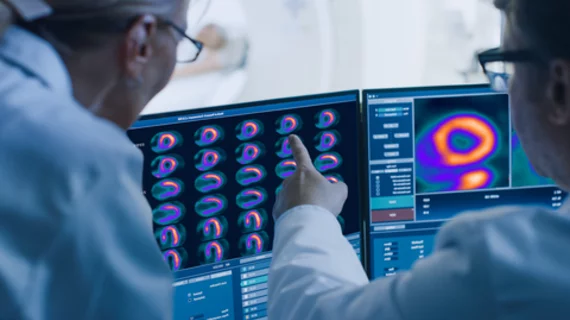New radiotracer could be a 'game changer' for diagnosing CAD
The U.S. Food and Drug Administration just granted its approval to a new PET imaging agent said to improve the detection of coronary artery disease (CAD), according to a September 27 announcement.
GE Healthcare’s Flyrcado (flurpiridaz F 18) injection is the first of its kind in PET myocardial perfusion imaging (PET MPI). GE maintains that the agent offers superior diagnostic quality to single-photon emission computed tomography (SPECT) MPI, which is routinely used for patients with suspected CAD.
One of the major benefits of Flycardo is its extended half-life of 109 minutes—significantly longer than other currently available PET MPI imaging agents. The longer half-life allows for off-site manufacturing, which has the potential to expand access to PET MPI diagnostics. What’s more, the longer half-life would enable providers to conduct multiple cardiac examinations, including exercise stress testing, within the same timeframe, and patients can be rescanned during the same appointment if necessary.
Jamshid Maddahi, MD, principal investigator of the Flyrcado clinical trials and clinical professor of medicine and molecular and medical pharmacology at UCLA School of Medicine, described the imaging agent as “the most exciting development in the field of nuclear cardiology over the past few decades.”
“Although PET MPI as a modality enables high diagnostic accuracy as compared to SPECT MPI, only a minority of annual PET scans in the U.S. are PET MPI because of limited access to the currently available PET tracers—which may be addressed with the introduction of Flyrcado,” Maddahi said in a release. “I am excited for this new radiotracer and its potential impact as a game changer for diagnosing the disease with the highest mortality rate in the world.”
Flycardo is approved for use in adults with known or suspected CAD to evaluate for indications of myocardial ischemia and/or infarction. Its use does carry the risk of side effects. In clinical trials, around 2% of patients experienced shortness of breast, headache, chest pain, fatigue, nausea, abdominal pain and dizziness, according to an FDA release.
The imaging agent will be available to U.S. markets in early 2025.

